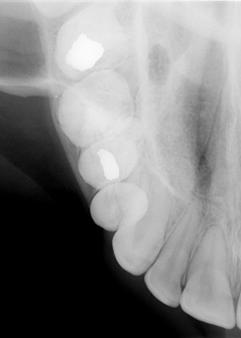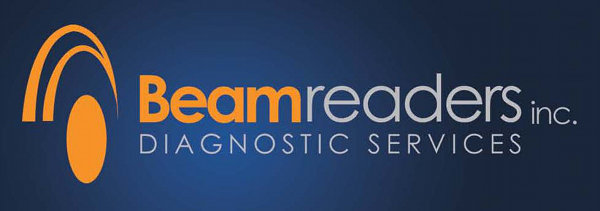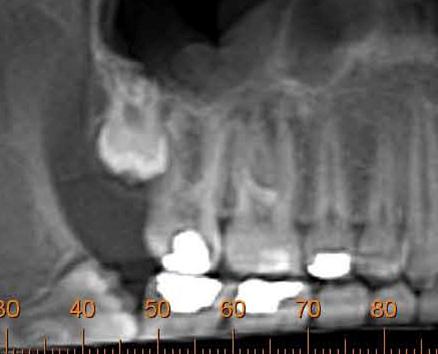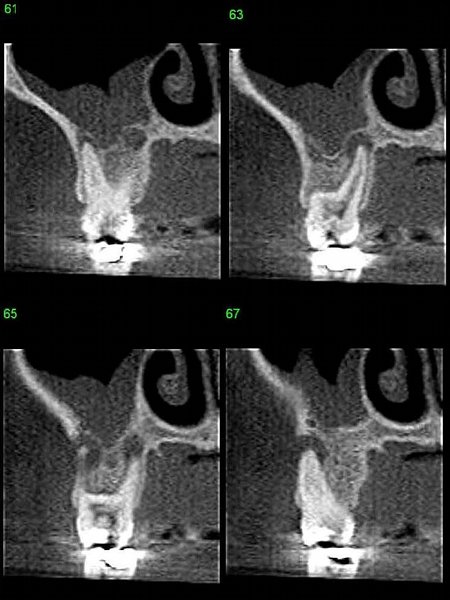After reviewing the conventional radiographs, the orthodontist prescribed a Cone Beam CT scan of the maxilla. Upon completion of the procedure, it became clear what the conventional x-rays had failed to completely reveal.
The reconstructed panoramic view (fig. 3) shows possible problems in the apical region of tooth #3 as well as possible involvement in the sinus.
The reconstructed panoramic view (fig. 3) shows possible problems in the apical region of tooth #3 as well as possible involvement in the sinus.
The cross sections (fig. 4) clearly reveal apical lesions in the distobuccal root (#61), the lingual root (#63 & #65), and the mesiobuccal root (#67). Also seen in the cross sections is the fact that the floor of the right maxillary sinus is discontinuous, and that the lucency at the apices is continuous with the lumen (air space) of the sinus. There is also a soft tissue density in the floor of the sinus.
The 3D rendering that was also provided (fig. 5) helped the patient better understand the "bump" he was feeling and what was happening in his mouth.
With the help of the CBCT images, this patient was referred (along with the images) to an endodontist for treatment.
This case demonstrates that when limited to conventional dental x-rays, the apparent "absence of evidence" (in this case pathology) is not necessarily the "evidence of absence." Through the combination of an observant orthodontist and the availability of modern imaging technology, a possible serious problem may have been avoided.
This case demonstrates that when limited to conventional dental x-rays, the apparent "absence of evidence" (in this case pathology) is not necessarily the "evidence of absence." Through the combination of an observant orthodontist and the availability of modern imaging technology, a possible serious problem may have been avoided.












